As the Arab Reform Initiative recently pointed out during a discussion with Tunisian activist Khawla Ksiksi, Arab/Muslim countries of the Middle East and North Africa have “generally failed to adopt laws or measure to fight racism and discrimination against black people.” To be sure, many Blacks are indigenous to the SWANA region, such that anti-Black racism cannot only be explained by the latent xenophobia of those who worry that refugees and illegal immigrants are harming social cohesion or endangering the economy. To go deeper into the DNA of Arab/Muslim racism, TMR asked Khawla Ksiksi to give an in-depth overview of the situation in Tunisia.
Khawla Ksiksi
Wsif (slave/nigger), guerd (monkey) khadem (servant) tsafi edam (literally translated this means removing toxins from the bloodstream and is used as a pejorative expression to say it is a remedy for diseases), nos elil (midnight). These words have not been taken from a historical book or heard in a story about slavery: they are the daily routine of black people in Tunisia. This accursed symphony composed by the state and played by society is repeated incessantly in the lives of Tunisians who get lost between its notes.
Although Tunisia is among the first countries in the world to abolish slavery and the first Arab country to establish a law criminalizing racial discrimination, racism is still omnipresent. It is embedded in all fields in different forms: direct or indirect, conscious or unconscious, societal or institutionalized.
I have to admit that racism in Tunisia has certain peculiarities generated not only by historical facts, but also by the current situation. In what follows, we will discuss all these elements.
Stigmatizing and Omission
Slavery in Tunisia was abolished in three successive phases. First of all, it came in 1841 with the decision of ruler Ahmed I ibn Mustafa, the 10th Husainid Bey, to prohibit the trade, import and sale of slaves on Tunisian territory. Then, a year later, Ahmed I ordered that all newborn Black children be presumed free. Finally, in 1846, he dictated the liberation of all slaves and totally abolished slavery. This historical aside shows that the abolition of slavery in Tunisia was not as revolutionary as believed. Nevertheless, it went through all its stages because of the resistance of landowners (lords) and others who benefited from the “advantages” of slavery.
After 174 years, the resistance of Tunisia’s Blacks is still relevant. Why? This is simply the result of our failure to observe concrete changes in our situation in society. We live de facto the same hierarchical relationship, the same economic subordination and especially the domination and paternalism exercised over the Blacks in all areas. In this sense, I dare say that the experience of every Black person in Tunisia is traced by this heavy and exhausting heritage. I rely on my personal experience to better explain this point.
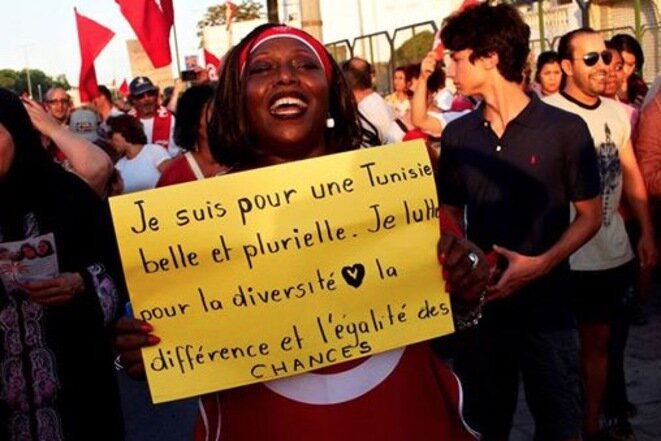
Resident in Tunis, the capital, I am originally from southern Tunisia. Living in these two environments, which are different in many ways, has allowed me to have access to a rich culture, but also to confront a two-sided racism.
As a youth I was shocked by the normalization of racial discrimination in the south where the Black person is called “wsif” (slave) and the non-black person is called “horr” (free). These terms were/are used by the dominant and the dominated with absolute ease. We are faced with quiet social divisions that are going on quietly, even unnoticed. I used to think it was a linguistic habit that had no connotations; but with time I began to grasp the deeper meaning of these “simple” words.
Societal racism is nothing but the fruit of institutionalized racism, planted and fed by the state. Indeed, the abolition of slavery was motivated by political stakes rather than the will to defend a humanitarian cause. This decision was not accompanied by remedial measures. As a result, slavery was abolished on the legal level only but without reaching the social level. A policy of invisibilization and marginalization was established: Blacks did not/do not have the same privileges as non-Blacks and they did not/do not have access to the same rights and positions. They were/are invisible in the public space, in education, in politics and in the economic and social spheres. A Black person was/is not allowed to be a judge or lawyer. He/she can pass written exams (where color is “masked”) but not oral exams.
Attempts by Blacks to break out of the margins, move closer to the center and catch up on economic and social gaps are not always welcome. I pick as an example the case of Ichraf Debbech, a young Black entrepreneur, who was trying to improve her economic situation by opening a gym in Mednine (southern Tunisia). When she succeeded, she suffered racist attacks. She was advised to shut up and accept this injustice and when she refused, a call for a boycott was launched against her business, her mother was fired from her job and she lost everything. (Ichraf Debbech talks about her struggles on Facebook.) This is not an isolated case, because the policy of the state is that society refuses to see a Black person outside of the small settings in which they have been imprisoned: for them the role of a Black person is limited to serving, but when it comes to taking center stage, they must be invisible.
In the capital, I was confronted with indirect stigmatization and racism. The people I met often asked me the same question: am I an “African”? (Synonymous with sub-Saharan in Tunisia). This expression reveals a huge identity crisis. Tunisians do not recognize their belonging to Africa and associate the whole continent with the color of Black skin. This stigmatization leads to several racist behaviors. Indeed, the image of sub-Saharan migrants is so negative that they are perceived as dirty, ignorant, stupid, uncultured and uncivilized. This xenophobia mixed with racism makes the life of a Black person in the capital difficult and our integration in the public space almost impossible.
Two dictators, same policy:
The policy of invisibility and stigmatization began after Independence, when the first president of Tunisia, Habib Bourguiba, traced and shaped the Republic and its values. He created an unequal climate where he totally ruled out Blacks. This color that has become more than a skin color is an obstacle to any attempt to succeed. During the period of Bourguiba, Blacks were forbidden to occupy positions of power and decision-making. It marginalized the south in general and the Blacks from the south in particular.
It is not by chance that Blacks have remained at the bottom of the social ladder, that Tunisia has known throughout its history only one minister and one Black deputy and that even in regions where there is a large concentration of Blacks, there are no elected officials in legislative or municipal elections. It should be noted that 10 to 15% of the Tunisian population is Black, but they are drowned in a system that forces them to be subordinate to their masters.
The case of Slim Marzouk underscores my point. This Black man who studied aviation in Paris, asked to deliver his services in Tunisia during the Sixties, but Bourguiba refused his request because of his skin color. Swept along by his rage, he tried to form a political party based on the defense of the Black cause. To bury this attempt, Marzouk was imprisoned in a psychiatric hospital where he spent more than 30 years.
This deliberate, systemic and calculated marginalization flourished during the dictatorship under Ben Ali’s regime. 23 dark years in the history of Tunisia, 23 years under a regime of torture, racism, sexism, classism, corruption and all forms of despotism, 23 years of injustice and inequality where Blacks found no way to raise their voices, because raising one’s voice at that time was equal to torture to the death.
During this period, all our struggles demanded democracy. We didn’t pick our battles because we had only one enemy—a dictator who extinguished every spark of struggle and uprooted every attempt to revolt.
A revolution and then what?
The oppression was not for nothing, a revolution was slowly brewing over a low flame. Finally thousands of voices came together to demand justice and dignity, two notions that had been buried for years. On January 14, 2011, we shouted, “Get out, get out, down with the dictator,” and by a miracle, he got out!
At the time I was 18. My coming of age coincided with the blossoming of human rights in Tunisia. We had both just seen the light, both young, ambitious, at the beginning of the experience. There were struggles that were rekindled and others that were born, including the struggle against racial discrimination.
Associations began to raise their voices, to speak of an atrocious reality and an ingrained injustice. Faced with a denial by society, the struggle was not easy. Neither society nor decision-makers were used to listening to these voices. The beginnings of our struggle were a kind of social suicide. We were accused of being paid agents, traitors, profiteers and even sick people with an inferiority complex. Even within activist circles our struggle was not welcome. The policy of marginalization succeeded in making us invisible even to the advocates of human rights.
In 2018, after a young Congolese girl was stabbed because of her skin color, the Tunisian parliament recognized that Tunisia is not a utopia and finally enacted a law against racial discrimination. Our Parliament established the law to ban all forms of racial discrimination with penal sanctions and fines for :
- inciting hatred, violence, segregation, separation, exclusion or threat to any person or group of people based on racial discrimination
- the dissemination, by any means, of ideas based on racial discrimination, racial superiority or racial hatred
- the praise of practices of racial discrimination by any means
- education, membership or participation in a group or organisation that clearly and repeatedly supports racial discrimination
- supporting or financing activities of associations or organizations of a racist nature
Such was the case with the abolition of slavery, as this law remains ink on paper with the absence of concrete decisions showing a real political will to change things.
We anti-racist activists and militants want to go beyond sanctions. We are looking for sustainable solutions. Our primary focus is on education. Therefore, we call for a national strategy to fight racial discrimination, in-depth studies and research on the situation of Black people, training for all stakeholders in the process of seeking justice, educational programs to raise awareness of this issue among young learners, a media strategy to break down the stereotypes developed around Black people, restorative measures for those who have suffered from years of marginalization, and equal opportunities and conditions. Since racism affects all areas, its elimination must also be aimed at all areas, without exception.
To conclude, I would like to say that it is true that in Tunisia there have not been murders of Blacks by the police as in the United States, but silence and ignorance also kill. While violence against Blacks has not reached the same degree of severity, still it is there and visible to the naked eye. Certainly, the road is long and even if we are moving slowly, I think we are headed in the right direction. I end this essay with a quote from my idol, Angela Davis, who said, “I’m no longer accepting the things I cannot change. I’m changing things I cannot accept.”



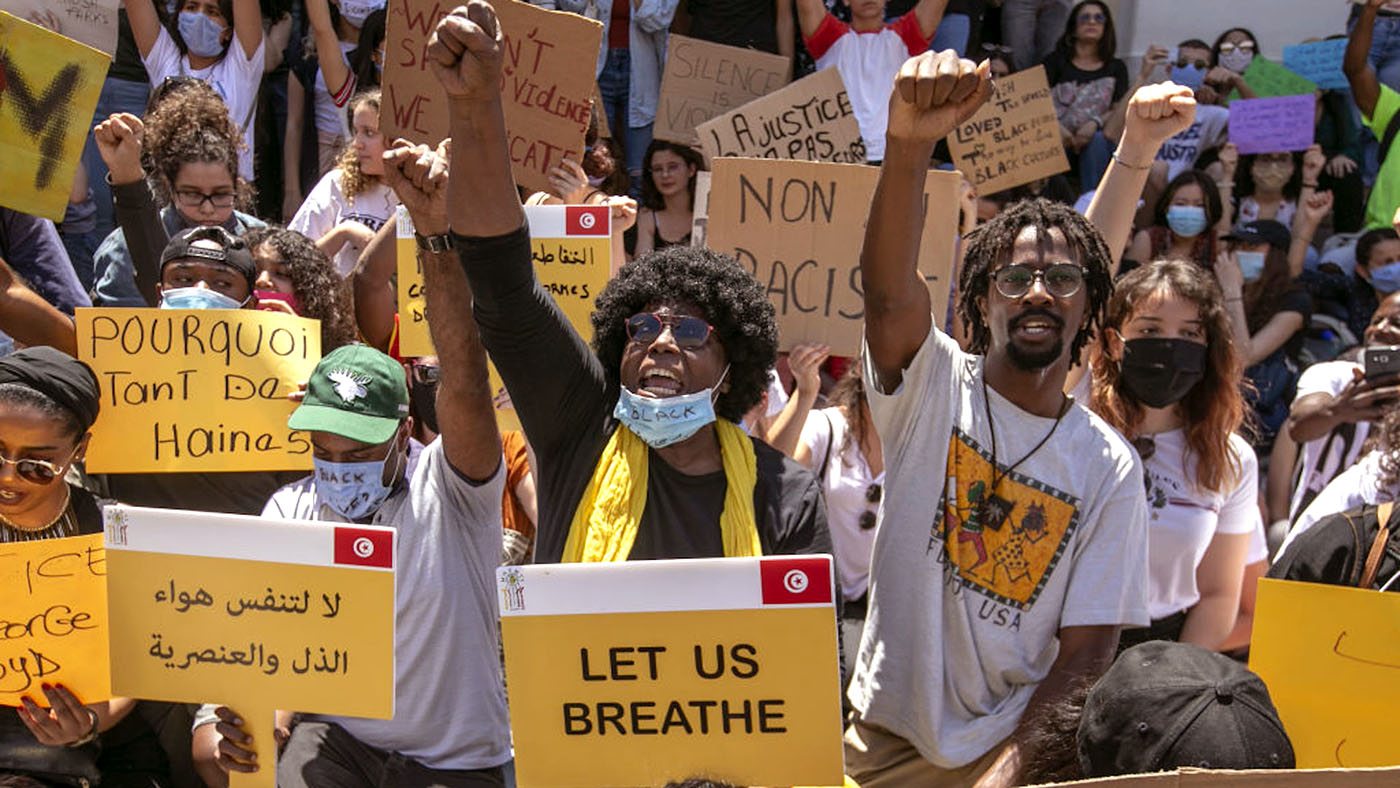


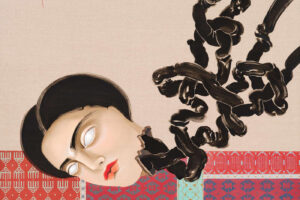


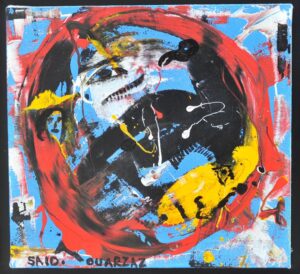

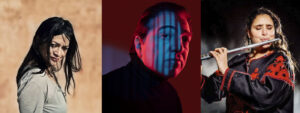
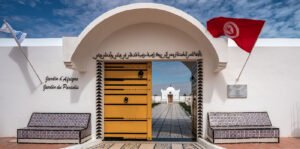


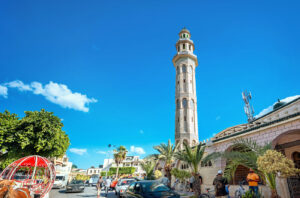

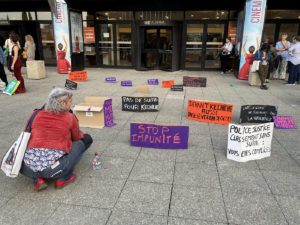

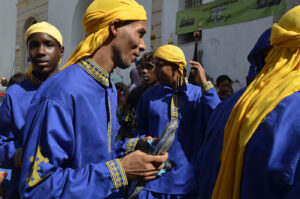






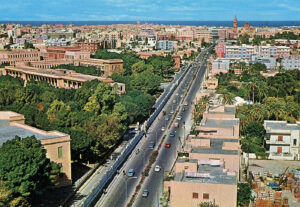
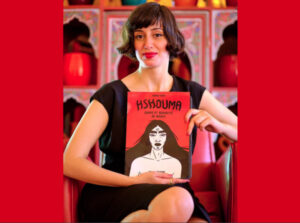
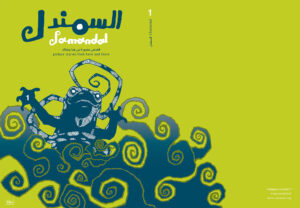

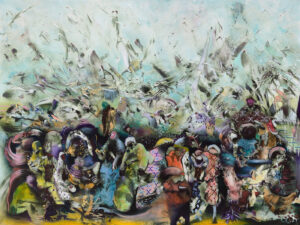
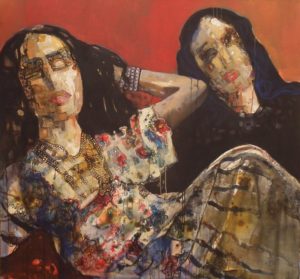
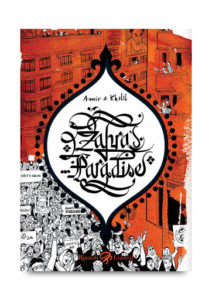
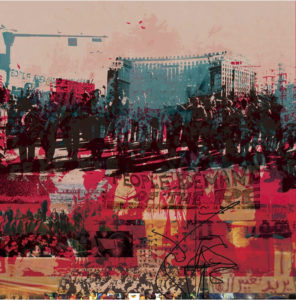

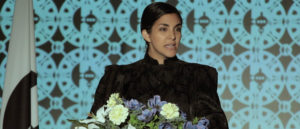


Los turcos siguen teniendo la mentalidad cerrada que presidente como este diria que la presencia de negro desestabiliza la demografia de su pais piensas que ese señor con la “educacion” y la “formacion” por la que a pasado es digno o normal hablar de esa manera?
Yo creo que no.
y supone estar en la union africana
Los negros estan sufriendo apiñalamientos, niños, mujers y jovenes tirados en el desierto a su suerte sin ninguna razon solo para no ser apiñalados sin problema.